Irrigation plays a crucial role in ensuring that your plants receive the right amount of water at the right time. Proper irrigation not only promotes optimal growth and yields but also helps conserve water resources and protect against drought conditions. By implementing an efficient irrigation system, you can observe the watering schedule to meet the specific needs of different plant varieties, minimizing wastage and reducing water consumption.
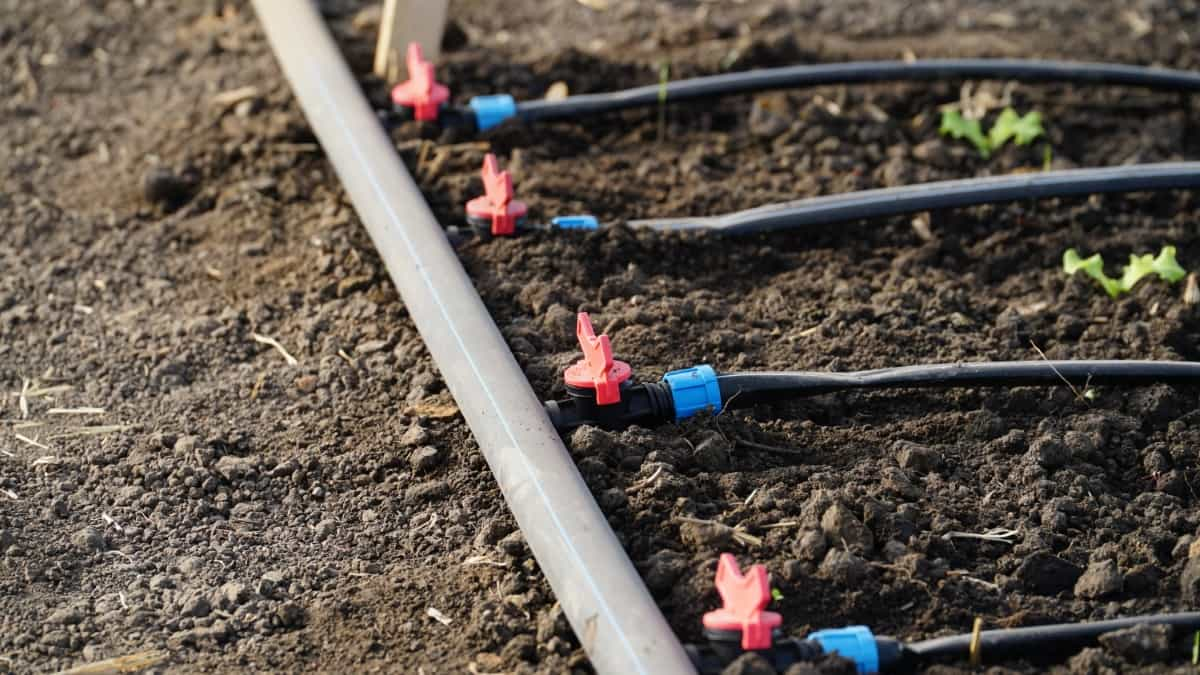
Understanding Drip and Sprinkler Methods
Drip and sprinkler methods are two popular choices, each with its own set of benefits. Understanding how irrigation systems work is key to maximizing plant health and growth. Drip irrigation involves delivering water to the plant roots through several tubes and emitters. This method ensures that moisture reaches where it’s needed most efficiently. On the other hand, sprinkler irrigation mimics natural rainfall by spraying water over the foliage of plants.
It covers a larger area but can lead to some water loss due to evaporation. Both systems have their advantages depending on your specific needs. Whether you prefer precise root-level watering or broader coverage for your garden, understanding these methods will help you make an informed decision for optimal plant growth and health.
Overview of Drip Irrigation: How It Works and Key Components
The drip irrigation system is an effective way of watering plants by delivering water to the roots. It works by using a network of tubing with small holes, emitters, or drippers that release water slowly and evenly over time. This targeted approach helps minimize water waste and evaporation while ensuring plants receive adequate hydration. By regulating the flow rate, drip irrigation provides consistent moisture levels to promote healthy growth without excess runoff.
Compared to traditional sprinkler systems, drip irrigation reduces weed growth and minimizes disease risk by avoiding wet foliage. The controlled delivery of water also prevents soil erosion and nutrient leaching, making it an eco-friendly choice for sustainable gardening practices. The main parts include the drip tubing, which carries water from the source to the plants; emitters that control the flow rate at each plant; filters to prevent clogging; pressure regulators for consistent performance; and a backflow preventer for safety.
In case you missed it: 8 Best Drip Irrigation Kits in India: Guide to Buy Top Drip Irrigation Kit at Affordable Price
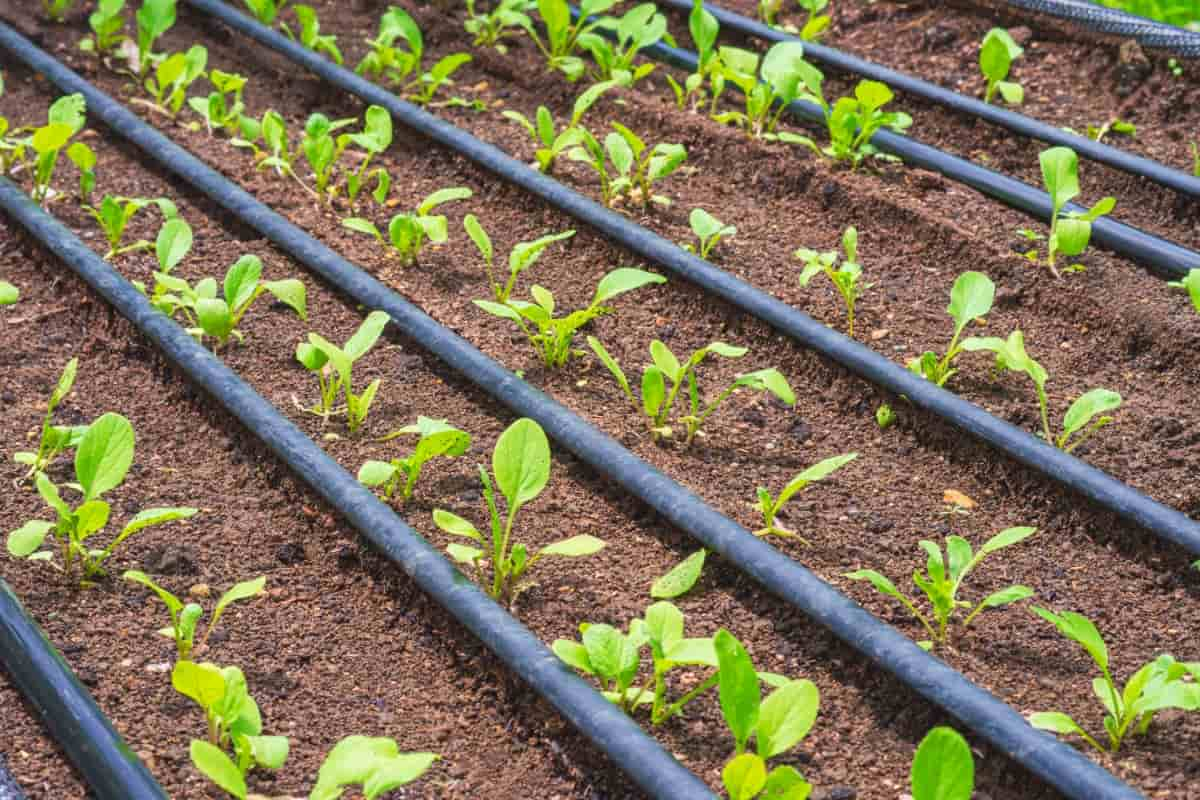
The heart of any drip system is the timer or controller that automates watering schedules based on specific plant needs. This controller allows you to customize settings based on different zones in your garden or field. Additionally, some fittings and connectors ensure a tight seal between components for leak-free operation.
Overview of Sprinkler Irrigation: How It Works and Key Components
The sprinkler irrigation system is a common way of watering plants in gardens, lawns, and agricultural fields. The system distributes water through pipes to sprinklers strategically placed across the area. When activated, these sprinklers release water in controlled bursts, simulating natural rainfall. This helps ensure even coverage of the entire planting area. The process begins with a water source that feeds into the main pipeline connected to the sprinkler heads.
These heads are designed to disperse water either in a fixed pattern or adjustable range based on the needs of the plants being irrigated. Some systems operate manually, while others can be automated using timers or sensors. Sprinkler irrigation offers convenience and versatility for efficiently watering various types of vegetation. When setting up a sprinkler system, factors like water pressure, nozzle type, and spacing must be considered for optimal performance.
The main components include sprinkler heads, pipes, valves, and a controller. Sprinkler heads disperse water in a specific pattern over the area being irrigated. Depending on the system design, they can be stationary or rotating. Pipes deliver water from its source to the sprinkler heads. They need to be properly sized and installed to ensure adequate water flow without leaks or blockages.
Valves act as gatekeepers, regulating the flow of water through different zones within the system. The controller is like the brain of the operation, allowing users to program watering schedules based on factors like time of day and duration. It provides flexibility and control over when and how much water is applied to the landscape.
Water Efficiency Comparison: Drip vs. Sprinkler
Drip irrigation and sprinkler systems are two popular methods for achieving a lush landscape while conserving water. Drip irrigation delivers water to the plant roots with minimal evaporation or runoff. This approach ensures that plants receive the right amount of moisture they need, reducing water waste. On the other hand, sprinkler systems spray water over a larger area, leading to more potential evaporation and overspray. While effective for covering large areas quickly, sprinklers may not be as precise in delivering water where it’s needed most.
In case you missed it: Sprinkler Irrigation Design, Layout, Components, Cost
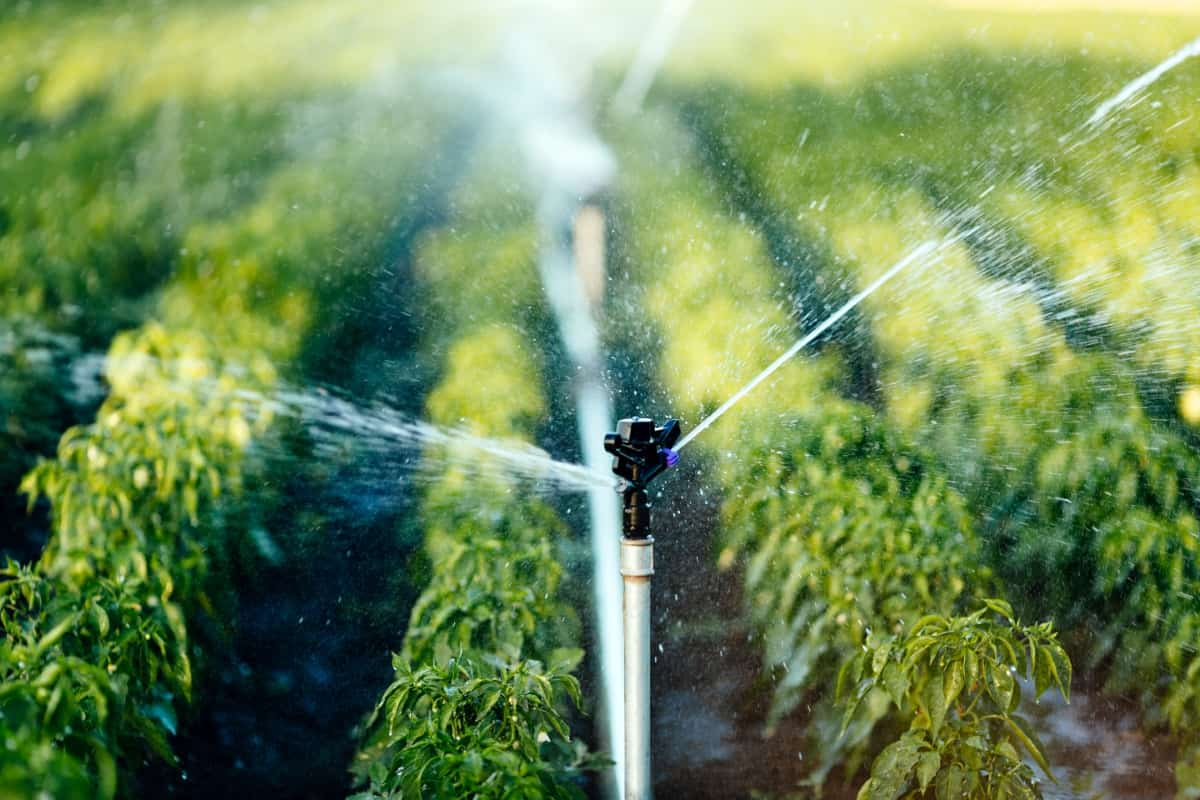
Drip irrigation tends to be more efficient in conserving water compared to traditional sprinkler systems. By minimizing wastage through direct delivery and reduced evaporation losses, drip irrigation is often seen as a sustainable choice for promoting healthy growth while saving on valuable resources.
Cost Analysis: Initial Setup and Long-Term Maintenance
Drip irrigation systems may require more investment in the initial setup due to components like tubing and emitters. However, their long-term maintenance costs are generally lower than those of sprinkler systems. Conversely, sprinkler systems have lower upfront costs but can incur higher maintenance expenses over time due to issues like nozzle clogging or pump repairs. Additionally, water usage efficiency plays a significant role in determining overall cost-effectiveness.
It’s crucial to evaluate the initial setup and ongoing maintenance expenses associated with each irrigation method to make an informed decision based on your budget and long-term financial goals. However, drip systems require regular checks and possible replacement of clogged emitters or damaged tubing. Sprinkler systems might have lower maintenance requirements but can lead to higher water wastage if not properly adjusted or maintained regularly.
Suitability for Different Soil Types
Different soil types have varying water retention capacities, affecting how efficiently each system will work. In sandy soils that drain quickly, drip irrigation might be more suitable as it delivers water directly to the roots without much wastage. On the other hand, in clay soils that retain water for longer periods, sprinkler systems could be a better option to cover larger areas effectively.
Loamy soils, a mix of sand, silt, and clay, are versatile but may lean towards drip irrigation for precise watering control in different areas of the garden based on plant needs. Understanding your soil type is key to optimizing your choice between these two irrigation methods for a thriving garden ecosystem.
Impact on Plant Health and Growth
Drip irrigation systems promote healthier root development and reduce the diseases caused by wet foliage. This targeted watering also helps minimize weed growth by avoiding unnecessary moisture on the soil surface. On the other hand, sprinkler systems may lead to increased humidity levels around plants due to overhead watering. This can potentially create an environment conducive for fungal diseases to thrive if not managed properly.
In case you missed it: Hydroponic Drip System, Types, Advantages – a Full Guide
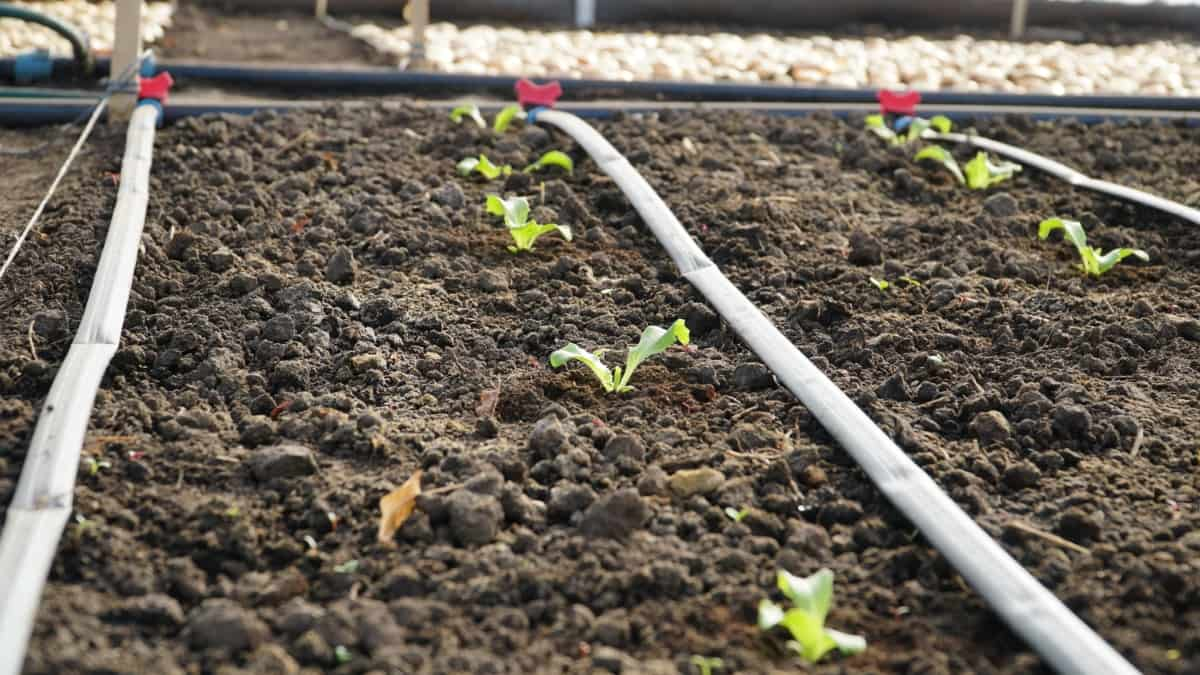
Additionally, the forceful nature of sprinklers can sometimes cause soil compaction, affecting root penetration and overall plant vitality. Understanding your plants’ specific needs is crucial when deciding between drip and sprinkler systems. By considering aspects such as plant type, soil conditions, and climate, you can ensure optimal health and growth for your garden or crops.
Energy Usage: Assessing the Environmental Footprint
Drip irrigation typically requires lower energy consumption compared to sprinkler systems due to its targeted water delivery directly to plant roots. Sprinkler irrigation, on the other hand, may consume more energy as it involves pressurizing water for widespread distribution. The constant pumping of water through sprinklers can result in an environmental impact due to increased electricity usage.
By choosing an irrigation system that aligns with your sustainability goals, you can contribute positively to reducing overall energy consumption and minimizing carbon emissions associated with agricultural practices. When deciding between drip and sprinkler irrigation methods, it’s important to know the long-term effects of your choice on the environment.
Installation Process: Step-By-Step Guide for Both Systems
Installing a drip irrigation requires careful planning and preparation. Start by mapping out the area to be irrigated and determining the placement of emitters and tubing. Next, install the mainline tubing along with any necessary filters or pressure regulators. Once the mainline is in place, connect the lateral lines that will carry water to individual plants or crops. Install emitters at appropriate intervals based on plant needs. Test the system to ensure proper functioning before burying any exposed tubing.
In case you missed it: Sprinklers and Foggers In Dairy Farm – A Beginners Guide
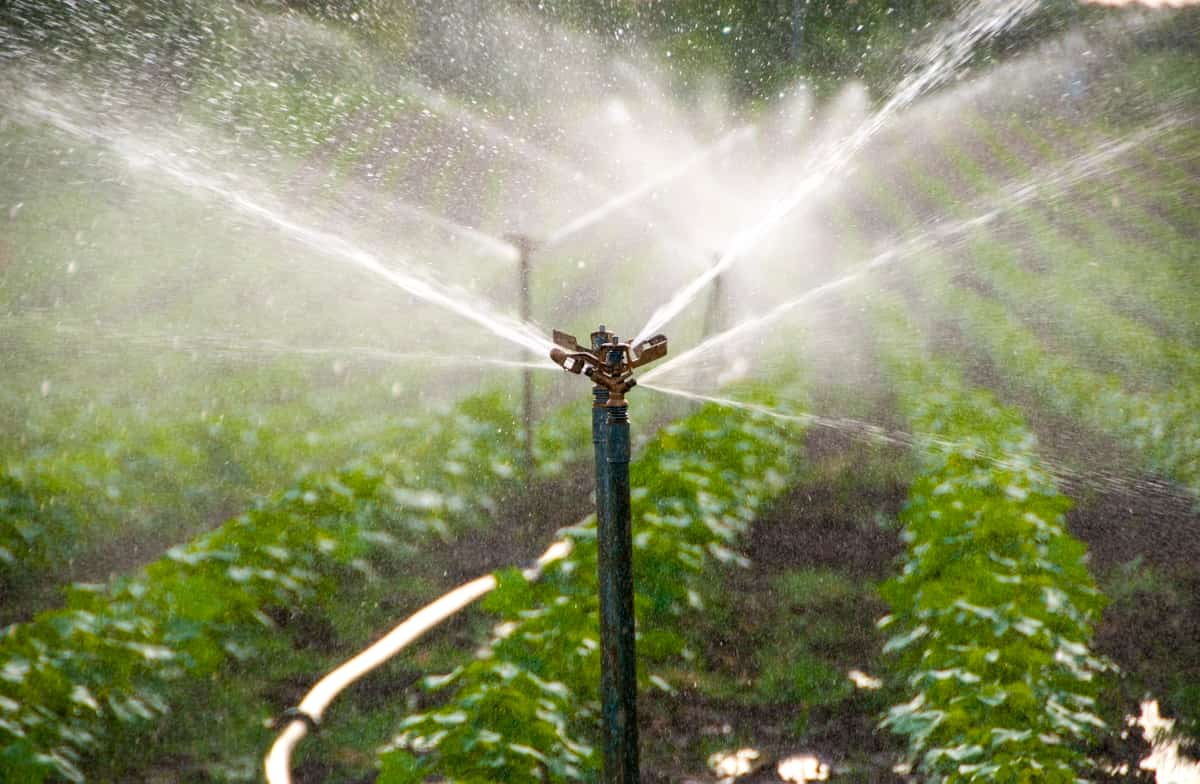
On the other hand, setting up a sprinkler irrigation system involves positioning sprinkler heads strategically for optimal coverage. These heads are connected to underground pipes that are connected to a valve box for control. Adjust each sprinkler head’s spray pattern as needed to avoid overspray onto non-target areas like sidewalks or driveways. Test-run the system post-installation to check for adequate water distribution across your landscape.
Adaptability to Various Crop Types
Different crops require different amounts of water, and an irrigation system that can accommodate these specific needs is essential for optimal yield. Drip irrigation excels at providing targeted watering directly to plants’ roots, making it adaptable to a wide range of crops, from delicate flowers to large fruit trees. The flexibility of drip lines allows for precise control over where the water goes, ensuring each plant gets just the right amount.
On the other hand, sprinkler irrigation may be more suitable for larger fields or crops that benefit from overhead watering. While not as precise as drip systems, sprinklers can still be adjusted to meet the requirements of various crop types by changing the nozzle type or adjusting the spray pattern. Choosing between drip and sprinkler irrigation will depend on factors such as crop type, field size, and water requirements. It’s important to consider these factors carefully when selecting an irrigation system for your agricultural operations.
Automation and Control Systems in Irrigation
Automation and control systems have revolutionized the way farmers manage their watering schedules. These advanced technologies allow for precise monitoring and adjustment of water delivery to crops, ensuring optimal growth and resource efficiency. With automated timers and sensors, irrigation systems can be fine-tuned based on real-time data such as soil moisture levels and weather conditions. This level of precision helps prevent overwatering or under-watering, leading to healthier plants and higher yields.
In case you missed it: Crops Suitable for Drip Irrigation, Types of Drip Irrigation
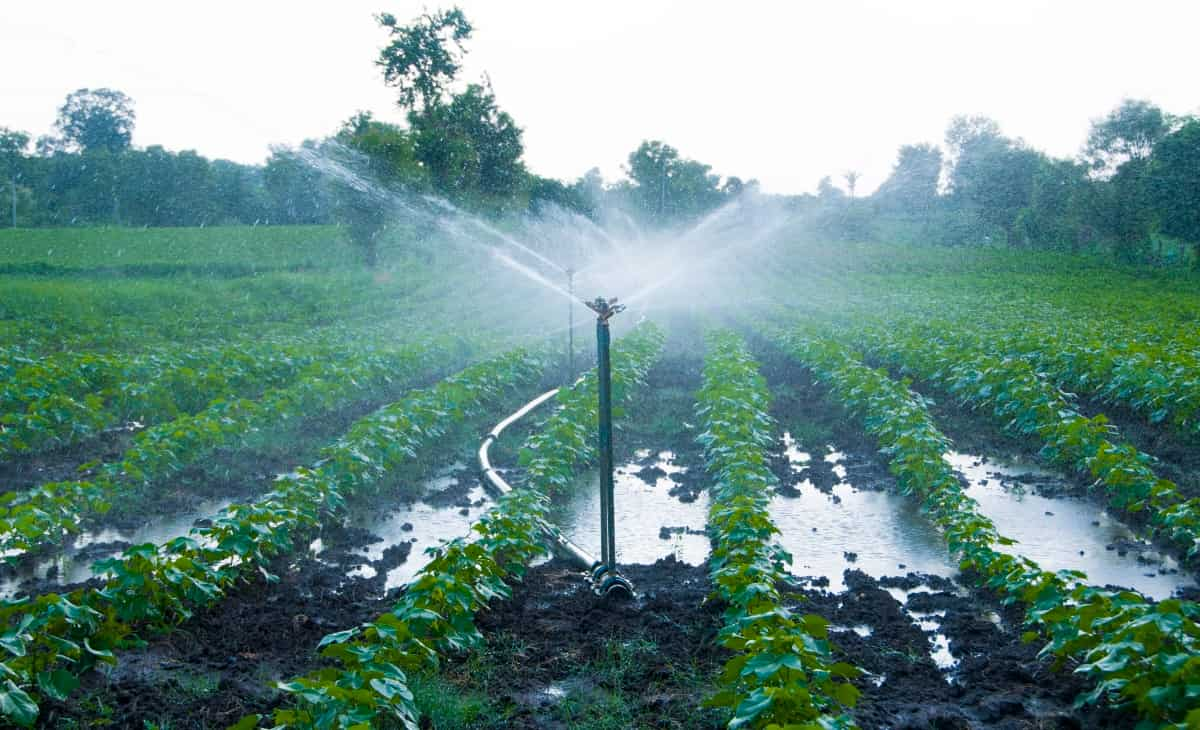
Controllers linked to mobile apps enable remote access to irrigation settings, allowing farmers to make adjustments from anywhere at any time. This convenience saves time and resources while maximizing crop production. Furthermore, automation reduces human error in manual watering processes, providing a consistent supply of water without constant supervision. This results in improved overall efficiency and better utilization of available resources.
Water Conservation Techniques: Best Practices in Both Systems
Water conservation is a crucial factor in irrigation systems, regardless of whether you choose drip or sprinkler methods. One effective practice is to schedule watering during the early morning or late evening hours when evaporation rates are lower. This helps maximize water absorption by plants and minimize wastage. Regular maintenance of irrigation systems is essential to prevent leaks and ensure optimal performance.
Please inspect for any damaged components, such as clogged emitters in drip systems or misaligned nozzles in sprinklers, and promptly address them. Utilizing mulch around plants can help retain soil moisture, reducing the need for frequent watering. Also, grouping plants with similar water needs together can improve efficiency and prevent overwatering in certain areas. Implementing rain sensors or moisture meters can help automate your irrigation system based on real-time weather conditions and soil moisture levels.
This smart technology ensures that water is only used when necessary, further enhancing conservation efforts. Choosing between drip and sprinkler methods can significantly impact water efficiency, plant health, energy usage, and overall crop yield. By knowing the needs of your garden or farm, you can make an informed choice that maximizes efficiency while promoting healthy plant growth.
Whether you opt for drip or sprinkler irrigation will depend on your circumstances and priorities. Whichever system you choose to implement in your agricultural practices or landscaping projects should align with your goals of sustainability and productivity enhancement.
- Goat Farming Technology: The Future of Goat Husbandry
- How to Build a Low-budget Goat Shed: Cheap Ideas and Tips
- Goat Farming Training Programs in India: A Beginner’s Guide
- Types of Pesticides Used in Agriculture: A Beginner’s Guide
- Economical Aquaculture: A Guide to Low-Budget Fish Farming
- 15 Common Planting Errors That Can Doom Your Fruit Trees
- How to Make Houseplants Bushy: Effective Tips and Ideas
- Innovative Strategies for Boosting Coconut Pollination and Yield
- Pollination Strategies for Maximum Pumpkin Yield
- The Complete Guide to Chicken Fattening: Strategies for Maximum Growth
- Natural Solutions for Tulip Problems: 100% Effective Remedies for Leaf and Bulb-Related Issues
- Revolutionizing Citrus Preservation: Towards a Healthier, Greener Future
- Natural Solutions for Peony Leaf and Flower Problems: 100% Effective Remedies
- Maximizing Profits with Avocado Contract Farming in India: A Comprehensive Guide
- Natural Solutions for Hydrangea Problems: 100% Effective Remedies for Leaf and Flowers
- The Ultimate Guide to Choosing the Perfect Foliage Friend: Bringing Life Indoors
- From Sunlight to Sustainability: 15 Ways to Use Solar Technology in Agriculture
- The Ultimate Guide to Dong Tao Chicken: Exploring from History to Raising
- The Eco-Friendly Makeover: How to Convert Your Unused Swimming Pool into a Fish Pond
- Mastering the Art of Delaware Chicken Farming: Essentials for Healthy Backyard Flocks
- 20 Best Homemade Fertilizers for Money Plant: DIY Recipes and Application Methods
- How to Craft a Comprehensive Free-Range Chicken Farming Business Plan
- Brighten Your Flock: Raising Easter Egger Chickens for Beauty and Bounty
- How to Optimize Your Poultry Egg Farm Business Plan with These Strategies
- Subsidy for Spirulina Cultivation: How Indian Government Schemes Encouraging Spirulina Farmers
- Ultimate Guide to Raising Dominique Chickens: Breeding, Feeding, Egg-Production, and Care
- Mastering the Art of Raising Jersey Giant Chickens: Care, Feeding, and More
- Ultimate Guide to Raising Legbar Chickens: Breeding, Farming Practices, Diet, Egg-Production
- How to Raise Welsummer Chickens: A Comprehensive Guide for Beginners
- How to Protect Indoor Plants in Winter: A Comprehensive Guide
- Ultimate Guide to Grow Bag Gardening: Tips, Tricks, and Planting Ideas for Urban Gardeners
- Guide to Lotus Cultivation: How to Propagate, Plant, Grow, Care, Cost, and Profit
- Agriculture Drone Subsidy Scheme: Government Kisan Subsidy, License, and How to Apply Online
- Ultimate Guide to Raising Araucana Chickens: Breed Profile, Farming Economics, Diet, and Care
- Bringing Hydroponics to Classroom: Importance, Benefits of Learning for School Students
- Ultimate Guide to Raising Polish Chickens: Breed Profile, Farming Economics, Diet, and Care
Is it possible to find out who wrote this article? I need it for my project I’m working on.
Hi Marcus,
You can use the information for your project. However, as a token of appreciation, please share this blog in your circles.
What is the similarities of drip irrigation and sprinkler irrigation? I want to know because of my daughter’s assignment..